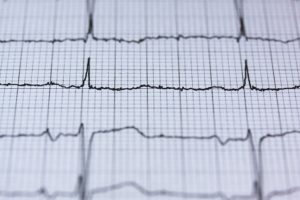 Researchers have developed an artificial intelligence (AI) model for electrocardiogram (ECG) analysis that allows for the interpretation of ECGs as language.
Researchers have developed an artificial intelligence (AI) model for electrocardiogram (ECG) analysis that allows for the interpretation of ECGs as language.
This approach can enhance the accuracy and effectiveness of ECG-related diagnoses, especially for cardiac conditions where limited data is available on which to train, the researchers suggest.
In a study published in the June online issue of Digital Medicine, the Mount Sinai team reported that its new deep learning model, known as HeartBEiT, forms a foundation upon which specialised diagnostic models can be created. The team noted that in comparison tests, models created using HeartBEiT surpassed established methods for ECG analysis.
“Our model consistently outperformed convolutional neural networks [CNNs], which are commonly used machine learning algorithms for computer vision tasks. Such CNNs are often pretrained on publicly available images of real-world objects,” says first author Akhil Vaid (Icahn School of Medicine at Mount Sinai, New York, USA). “Because HeartBEiT is specialised to ECGs, it can perform as well as, if not better than, these methods using a tenth of the data. This makes ECG-based diagnosis considerably more viable, especially for rare conditions which affect fewer patients and therefore have limited data available.”
Mount Sinai says that its researchers are building on the interest in so-called generative AI systems such as ChatGPT, which are built on transformers—deep learning models that are trained on massive datasets of text to generate human-like responses to prompts from users on almost any topic, by using a related image-generating model to create discrete representations of small parts of the ECG, enabling analysis of the ECG as language.
“These representations may be considered individual words, and the whole ECG a single document,” explains Vaid. “HeartBEiT understands the relationships between these representations and uses this understanding to perform downstream diagnostic tasks more effectively. The three tasks we tested the model on were learning if a patient is having a heart attack, if they have a genetic disorder called hypertrophic cardiomyopathy, and how effectively their heart is functioning. In each case, our model performed better than all other tested baselines.”
Researchers pretrained HeartBEiT on 8.5 million ECGs from 2.1 million patients collected over four decades from four hospitals within the Mount Sinai Health System. Then they tested its performance against standard CNN architectures in the three cardiac diagnostic areas. The study found that HeartBEiT had significantly higher performance at lower sample sizes, along with better “explainability.”
Girish Nadkarni (Icahn Mount Sinai, New York, USA): “Neural networks are considered black boxes, but our model was much more specific in highlighting the region of the ECG responsible for a diagnosis, such as a heart attack, which helps clinicians to better understand the underlying pathology. By comparison, the CNN explanations were vague even when they correctly identified a diagnosis.”









